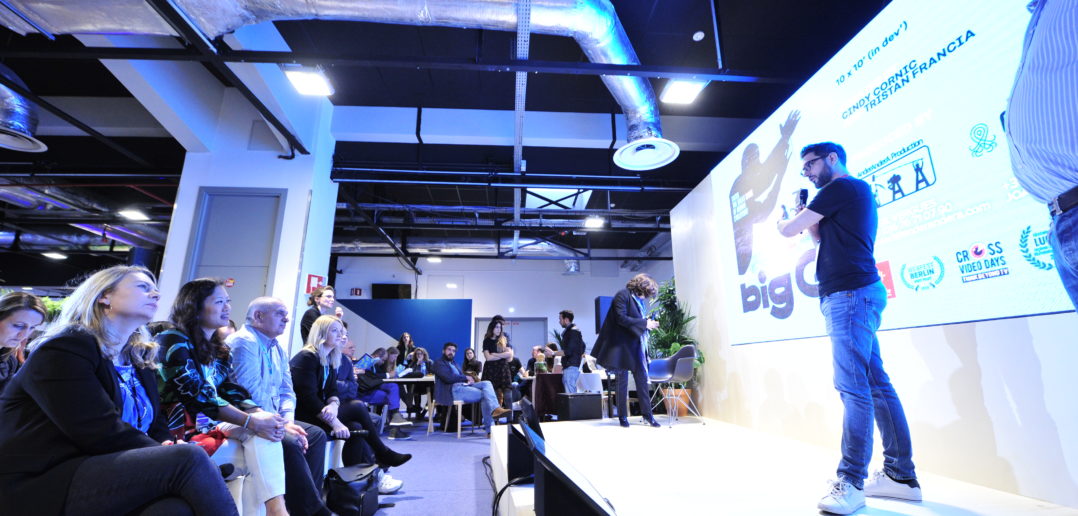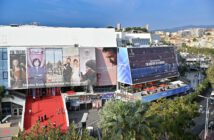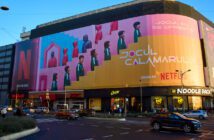Now you’ve got your show produced; how do you get it noticed? Here are five producer tips to get your show out into the hands of your fans.
1. Artwork – The old adage a “picture is worth a thousand words” is even more relevant in this age of social media and global economy
The “key art” is still the most important asset in your arsenal. It used to be called the movie poster or the sell sheet. Today, it is the thumbnail. This is the one image that will represent your project everywhere. Hopefully, you had a set photographer that captured images of your project that would become part of the main advertising. Screen captures can work but I’d advise against it. I have used screen captures, but we had to get creative.
The most important part of the artwork is making sure your audience remembers your project. This also extends to the font of the title of your project. Sometimes the picture is the words. Think Game of Thrones or Vikings. Also realise, what works in one territory for your market – may not connect with the audience in another. Your artwork may change depending on the territory and the language may change.
2. Trailer – This is your visual “pitch” to the audience, using the moving images you’ve shot
You have 30 seconds to 2 minutes (or sometimes longer) to tell the audience about your project. You should have different versions depending on your intended audience. I usually try to incorporate some element of the Artwork, usually the font, into the trailer. Sometimes, it can be an iconic image. In the trailer phase, the true “branding” of the project begins.
3. Festivals – Your first and best feedback and the first step in finding your audience
Make sure your project is completed before submitting, unless the festival specifically has a “Work in Progress” category. You will need your artwork and the trailer before submitting. This is the part where it gets tricky. Sometimes you already have a distributor interested in your project, so you wouldn’t submit to festivals. In some cases, you want to show in as many festivals as you can. This could be the first time you are getting opinions of someone other than family and friends. Getting in a festival is exciting, but getting rejected can be devastating. Keep going, eventually there will be a pattern of success or why you got rejected. This you can fix – before taking your project to an even bigger audience.
4. Connect with your audience – Now you’ve found your audience, keep them informed
Now is the time to create the project website and all the other social media accounts. Unless you’ve done crowdfunding, you should be creating your social media and online presence at this stage. I suggest you completely create your project and finish your project before anyone is even aware that you made your show. In the age of ‘new fresh content’, the clock starts ticking when larger audience is aware of your show. By the time you are finished with post-production, your show can already be dated.
Start the web presence small for your project with your close supporters, gradually building as you go. Build the project brand with your artwork and trailer. These will be your key elements across all social media. However, each platform is different. Different audiences will use the platforms differently. I’m not a fan of the same postings across Twitter, Facebook or Instagram. Create different media across your networks, depending on what the fans want. Fan interaction varies across all the media types.
Be sure to leverage the social media pages of your actors at this point. I’ve had my actors sign a non-disclosure until we are ready to fully announce the project. Typically, we are announcing a screening at a festival or an event. We are also sure to create an “event” that the fans can attend if any of the those involved with the project are attending.
Don’t forget the all-powerful press release to traditional media outlets in addition to all your on-line promotion. Appearing on a morning news show promoting your project can open the doors to an even greater market segment. At this point, it is about the publicity.
5. Tradeshows and Markets – Attend with your current project and start planning the sequel
Fans can make or break a show. Sometimes your biggest fan is the acquisitions executive that wants to take your project to an even bigger global audience. Or it could be a brand manager that may want to sponsor your show or use your talent to create branded content. Either way, your best chance to meet these types of people are at places like MIPTV.
There are a lot of different opportunities to explore relationships with different types of companies. You must pick the best one for your project. MIPCOM is different from MIPTV, there is some overlap. Do your homework. I attended a full tech show to explore the use of the new 4K technology where I got to play with the cameras, but only after listening to Sony’s 4K presentation at MIPCOM.
You don’t have to be the biggest fan of your show – but you do have to be its biggest advocate. You can always go off and do your passion projects, but sometimes you just must put the best elements in the hands of the fans and let them guide you.




